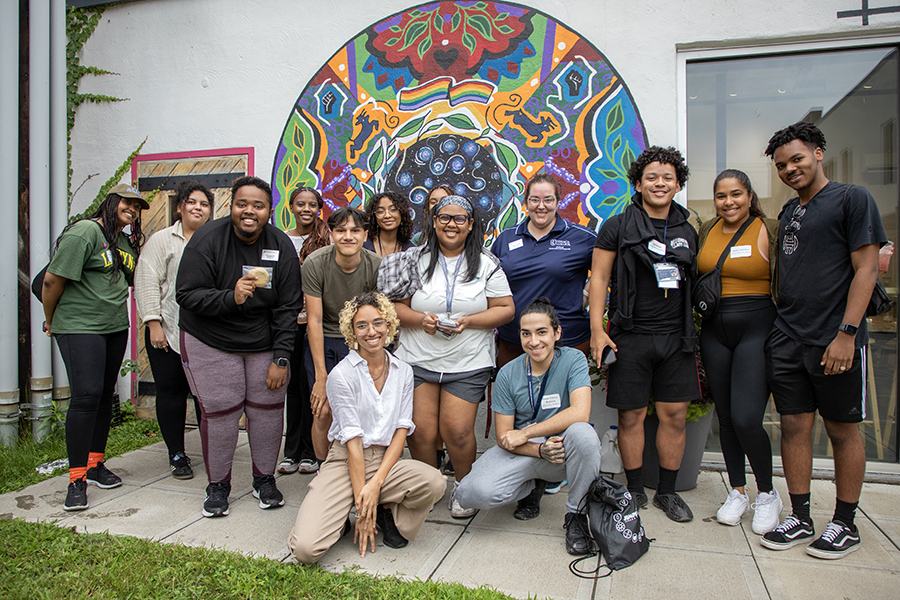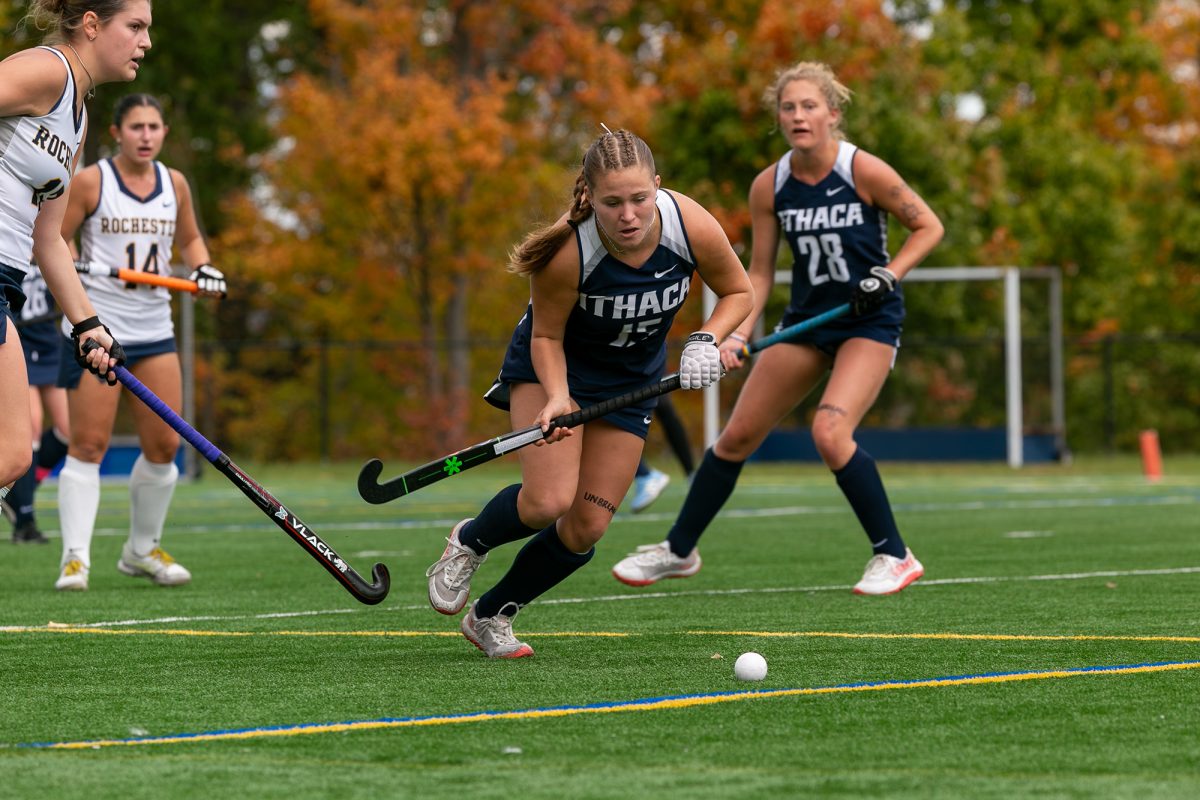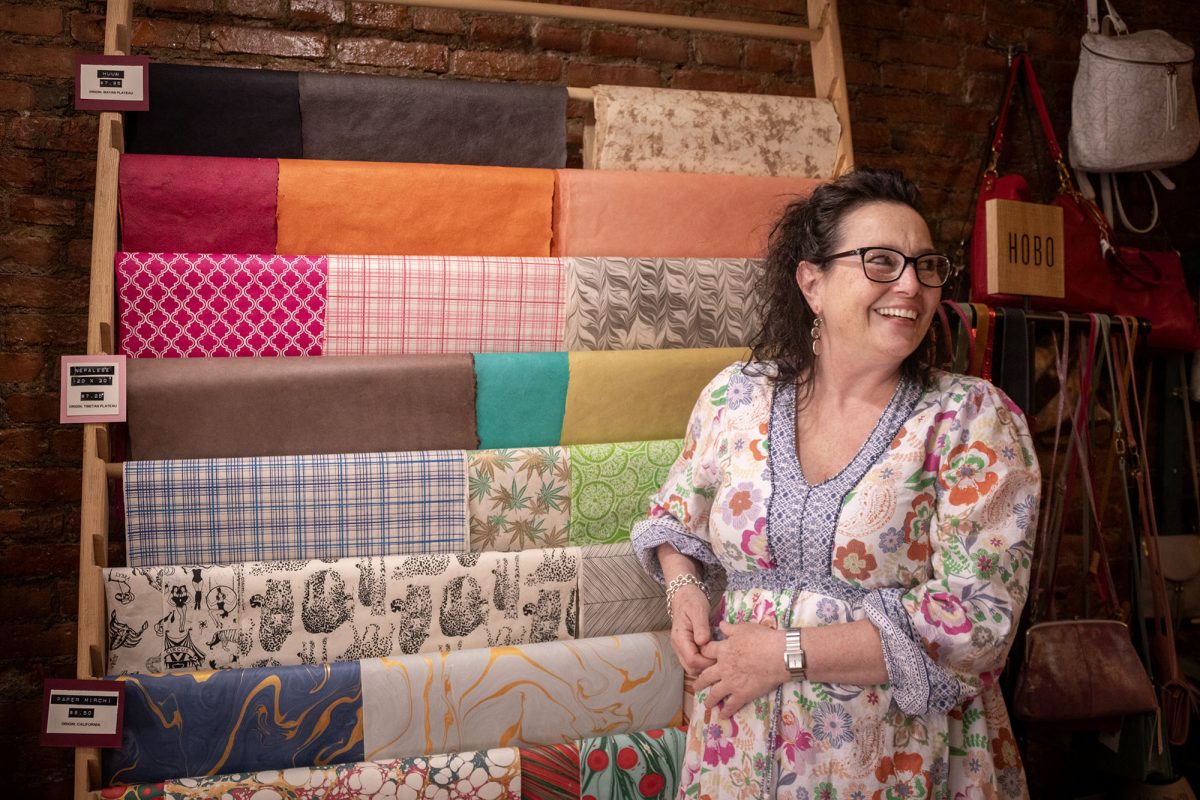In an effort to support incoming BIPOC students at Ithaca College, the BIPOC Unity Center hosted a new Jumpstart Program called “A Place Where YOU Belong: The BIPOC Experience” from Aug. 14–16.
Jumpstart is a one-and-a-half-day program that allows first-year and transfer students to engage with different departments and students at the college before orientation. Currently, there are 14 individual Jumpstart Programs that include different themes, like performance, exploring the environment and leadership. However, this year was the inauguration of “A Place Where YOU Belong: The BIPOC Experience.” Some of the activities included a trip to Taughannock Falls, a session with Olivia Carpenter ’22, owner of Via’s Cookies, and lunch with the college’s BIPOC faculty and staff.
The main goal of the BIPOC Experience Jumpstart program is to ensure that first-year BIPOC students feel a sense of community at a predominantly white institution.
First-year student Alicia Skipwith participated in the program and said she experienced culture shock when she arrived at the college but felt better being around people who look like her and share the same identity as her.
“Usually there’s this kind of stigma that at a PWI you’re just not going to fit in,” Skipwith said. “But being in this Jumpstart … we see that there are people out there that can support you and are going through the same thing as you.”
Angélica Carrington, director of the BIPOC Unity Center — formerly the Center of Inclusion, Diversity, Equity and Social Change — said the idea for the program was proposed by a group of student leaders.
Senior Alexa Rahman — one of the student leaders — said via voice message that she originally wanted to bring back the African-Latino Society, which was the first campus organization that advocated for and brought together students of color.
“It’s extremely important for BIPOC students to have programs like these, especially at a PWI,” Rahman said. “I think we would have a lot better engagement if we were able to reach students when they first come to [the college].”
However, she said not all students of color identify as African or Latino, which inspired her to gather a group of student to work on a proposal for wider change that had three components: a Jumpstart program for incoming first-year BIPOC students, affinity housing that will have programing dedicated to informing students about the history and issues BIPOC students face, and a mentorship program that would connect BIPOC students with alumni. As of now, the affinity housing and mentorship program have not been put in place.
Sophomore Matthew Williams helped construct the Jumpstart Program and the proposal. He said he wanted to help with the program because he feels the campus community has differing opinions on issues regarding race and color. Given that context, Williams said he wanted incoming first-year BIPOC students to feel comfortable at the college.
“It’s harder to solve the problem that already exists, rather than prevent it,” Williams said. “I thought that the best way to do that would be a Jumpstart program where people feel connected to the BIPOC community on campus. And that way, four years from now, that body of students would have a completely different experience, almost a whole new culture hopefully at that point.”
Carrington said she was able to move forward with the program because there were funds available and some of the other Jumpstart Programs would not be returning this year.
“[Williams] worked with me directly and met with me regularly to be able to formulate what exactly the learning objectives and intended outcomes for the BIPOC Jumpstart would be … and what we were hoping to get out of it,” Carrington said.
The Office of Analytics and Institutional Research reported in Fall 2022 that 72.4% of the student population at the college is white while 23.2% is BIPOC. Also, 80.6% of faculty and staff identify as white while 15.4% identify as BIPOC. The remaining percentages of the campus population is marked as international or unknown.
Carrington said she wanted to make sure the first-year BIPOC students also see representation among faculty, staff and alumni.
“Aside from navigating your courses and knowing the resources that are available, human connection is where that solidarity piece comes in on finding other folks who may share affinity or share experiences that can provide insight and guidance to navigate [college],” Carrington said. “For some students, whether they’re first-gen or maybe the first going to a four-year institution … there’s not a lot of people that look like us in leadership.”
Rahman said she wanted to make sure that BIPOC students know about the BIPOC Unity Center the second they arrive on campus, because she feels that many BIPOC students are unaware of the center and the resources it provides.
First-year student Jacquelyn Reaves participated in the new Jumpstart program and said she was initially nervous coming to the college because she was the only Black person in her campus tour group. But after participating, Reaves said she felt more comfortable because of the connections she made through the program.
“Jumpstart has definitely helped me cultivate connections with people and something that I found is that … I have a lot of things in common with them,” Reaves said. “And I’m not sure if I would have found such similarities if I was in a different Jumpstart.”
Williams said he is glad that the students enjoyed the program and wishes to keep in touch with the students. He said he hopes the program continues even after he graduates.
“I was just smiling because it’s a lot of work … and you worry before because you’re dealing with actual people and you have a goal, which is to make them have the most impacting experience possible,” Williams said. “The experience that you want them to have is one that sits with them because of what they learned.”
Assistant Photo Editor Xinyi Qin contributed to reporting.














